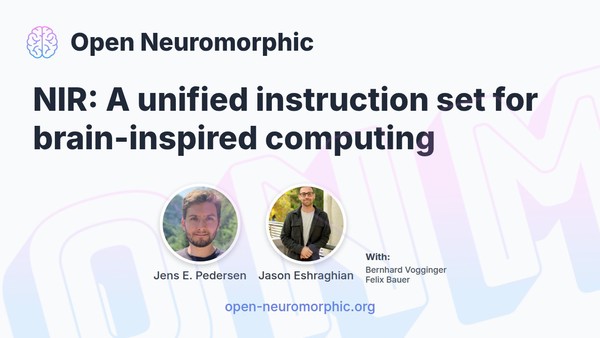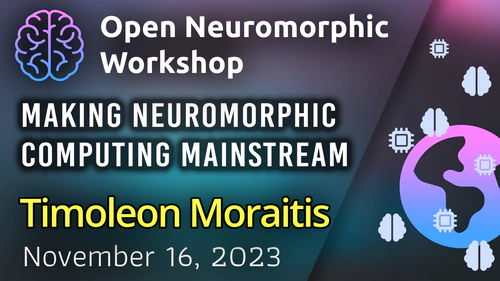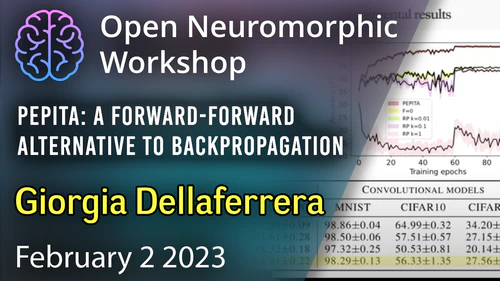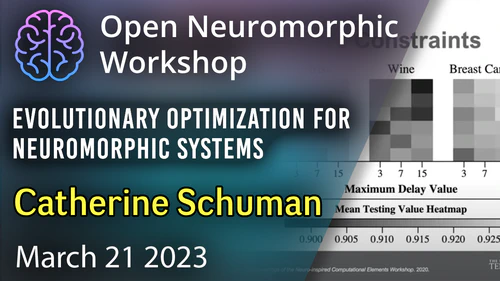Have you wondered how to use neuromorphic hardware platforms?
Are you depressed by your power bill after you bought your >400W GPU rig?
Then you came to the right place!
In this workshop, we will show you how to move models from your favourite framework directly to neuromorphic hardware with 1-2 lines of code!
We will present the technology behind, the Neuromorphic Intermediate Representation, and demonstrate how we can use it to run a live spiking convnet on the Speck chip.
NIR is currently supported by Intel Loihi, Speck, SpiNNaker2, Xylo and a host of simulators, including Norse, snnTorch, and Spyx.
Join us on the 5th of February to get your own hands-on experience with NIR and neuromorphic hardware!
All it requires is a computer and a bit of Python knowledge.
Agenda:
- 18:00 - 19:00: NIR introduction
- Motivation: coupling neuromorphic hardware and software
- Demonstrating NIR: from PyTorch to Speck
- Q&A
- 19:00 - 20:00: Workshop
- Hands-on experience with NIR via Jupyter Notebooks or custom models
- Q&A and collaborative discussions
Speakers:
- Felix Bauer
- Felix Bauer is a neuromorphic engineer working on cutting-edge algorithms and chips at SynSense. He co-authored the Neuromorphic Intermediate Representation and has published work on GPU-accelerated spiking neural networks via the Sinabs simulator, neuromorphic control and brain-machine interfaces.
- Jason Eshraghian
- Json is an Assistant Professor with the Department of Electrical and Computer Engineering, University of California, Santa Cruz. Jason is researching neuromorphic computing, spiking neural networks, and memory circuits. He is the main developer of snnTorch and co-authored the co-authored the Neuromorphic Intermediate Representation.
- Jens E. Pedersen
- Jens is a computer scientist studying his PhD in neuromorphic computing at the KTH Royal Institute of Technology. Jens co-authored the Neuromorphic Intermediate Representation, the Norse spiking neural network simulator and the AEStream event-based streaming library.
- Bernhard Vogginger
- Bernhard Vogginger is a research associate at TU Dresden working on neuromorphic computing software and applications in the lab of Prof. Christian Mayr. He currently leads the software development for the SpiNNaker2 neuromorphic system and has co-authored the Neuromorphic Intermediate Representation. Further research interests include radar processing and sustainability of AI and data centers.
Note: The event will be hosted virtually. Stay tuned for the video link and further updates.

Upcoming Workshops
Inspired? Share your work.
Share your expertise with the community by speaking at a workshop, student talk, or hacking hour. It’s a great way to get feedback and help others learn.






